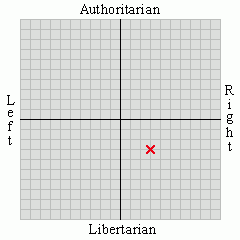
On a very simple level, the idea of harnessing the power of nature to provide electricity doesn't seem such a bad idea, eh? The wind blows, spins an aerofoil type blade using simple physical principles, turns a shaft rotating a generator. Bingo! Clean electricity. What's not to like?
Reality on the other hand, pokes it's nose around the corner with an evil grin before making mischief with the Tellytubbyland Turbines. Gearboxes burn out, workers injured and killed, whole 'Windfarms' shut down because of design faults, Turbine blades throw huge chunks of ice at all and sundry, the blades themselves come off and birds get splattered across school playgrounds. An extensive, although possibly not complete catalogue of such events can be found here. Not to mention that when the wind these things depend on gets a bit frisky, it occasionally acts as a demolition aid, as demonstrated rather graphically here.
When you look at what a Wind Turbine needs in terms of resources and maintenance, the 'free lunch' supposedly provided by wind looks increasingly less 'free'. Firstly, there is the loss of visual resource and disturbance of Wildlife habitat. Even one Wind Turbine requires a very deep and solid concrete base, which means a large hole needs to be excavated. Not so good for wildlife.
Let's 'do the math' as they say this side of the world. Say you have a fairly modern 3 Megawatt design. In order to get the same rated capacity as a modest 500MW Coal, Gas or Oil Power station you need 167 Wind Turbines. Not ten or twenty, but one hundred and sixty seven separate turbines. Each hole to anchor said turbine means, rounding the figures up and down a bit, to about 300 Cubic metres. This is filled with concrete. 167 times for a 3 Megawatt Turbine 500MW Wind farm. 50,100 Cubic Metres of concrete. Just for the bases. Nothing else.
Each 3MW generator is about 90m tall without rotor. According to various design specifications a 3MW turbine has a blade diameter of around 90 metres. Just for the sake of argument say that these are to be spaced in two offset rows with 180 metres between each supporting column. Which is probably too close by a factor of two, but this is simply an exercise in logistics, so I'll allow a little conservatism on the sums. Let's put 84 in the front row and 83 in the back. This means a dual row of Wind Turbines about 15km long and 360m deep. Just under 5.4 Square kilometres. For 500MW. That's only at the 'rated' value. Wind turbines are often cited as delivering, on best average, a single figure percentage of their rated capacity. Which means those 167 Wind Turbines are only actually delivering less than 50MW. That's not a hell of a lot in terms of generating capacity. At least in modern terms.
The above would mean, that in order to nominally compete with a 2000MW power station you have to multiply all the above figures by four. Then when you factor in the single digit efficiency power delivery of Wind Turbines, that multiplying factor has to go up to at least forty. This is jaw meets floor territory. To replace just one 2000MW power station you would have to plant enough 3MW turbines to cover almost the whole area enclosed by the M25 around London, England, or almost all of Metro Vancouver including as far East as Fort Langley, and as far south as White Rock on the US Border. But, and here is the big 'but', only if the wind is blowing at optimum speed. Which it so often isn't. Too much wind and the Turbine blades are 'feathered' and generated capacity drops. Too little for more than a day or so, and said Turbines have to take power from other sources to go into maintenance mode to stop the damn bearings seizing.
What seemed like the triffic idea of 'free' power from the wind now looks like a bit of a bum deal. That's before you factor in all the routing maintenance costs and breakdowns. Having read reports of whole Wind Farms being out of action for long periods and of high component failure rates, it's hard not to form the opinion that Wind Turbines aren't such a jolly spiffing wheeze. That's even before you look at the subsidies that have been thrown at such a limited technology.
Looked at from a purely back-of-a-cigarette-packet / napkin / whatever logistics exercise, it looks like Wind Power is strictly for the birds. On the other hand, perhaps not.











2 comments:
And on top of that you need back up generation capacity for when the wind doesn't blow or blows too hard. Which means you have to have the 2000MW conventional plant anyway, which because of nuclearphobia is likely to be a gas, oil or coal job kept running in spinning reserve and emitting most of what it would be emitting if it was producing the bloody energy there in the first place.
Exactly so.
Post a Comment